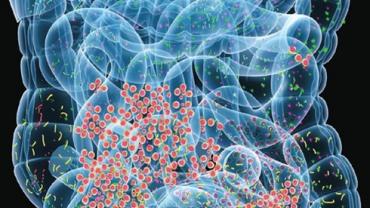
The year was 1847. Hungarian physician Ignaz Semmelweis made the radical proposal that hand washing in an antiseptic solution would reduce the mortality rates in maternity wards from a frightful 10 to 35 percent to a mere 1 percent. Unfortunately as with most pioneers of medical breakthroughs Semmelweis’s proposal offended colleagues and was ostensibly rejected on the basis of insufficient scientific evidence. However just a few years after his death Semmelweis’s successor Louis Pasteur published the germ theory which became the basis of future antiseptic protocols including that which was initially proposed by Semmelweis.
As the era of bacteriology progressed so did the development and widespread use of antibiotics and antiseptic agents. Where antiseptic procedures were once trivialized they have now become fundamental. The 21st century is marked with a plethora of antibacterial agents no longer limited to hand soaps but found in a vast array of consumer goods from clothing to kitchen equipment. One cannot walk into the grocery store without being greeted by antiseptic wipes and many women’s handbags sport hand sanitizer for those ‘emergency’ situations. On the heels of this mainstream obsession with cleanliness a bold British professor David Strachan dared to imply that a germ-free environment was not compatible with optimal health. As Strachan’s hygiene hypothesis was researched and supported evidence mounted against the widespread use of antiseptic agents and culminated in 2013 with an FDA safety investigation that may have at least curtailed the pervasive use of common antibacterial agents in various household products.
During the FDA safety investigation the most pervasive antibacterial agent triclosan and its cousin triclocarban found themselves on trial. These agents were found guilty of perpetuating increasingly alarming rates of antibiotic resistance fostering the growth of “superbugs” altering gut microbiome that protect against dangerous infections and thereby increasing risks of infections and allergies. Additionally triclosan and triclocarban were cited as carcinogens biotoxins and genotoxins capable of damaging various organ systems in the human body. Being found in urine serum mucus membranes and human milk triclosan is now dubbed an environmental contaminant that is readily absorbed by mucosal linings of the gastrointestinal tract and oral cavity. In response to these findings the FDA revoked triclosan’s GRAS status until further research was completed.
The effect of triclosan and similar antiseptic agents on the gut microbiome has been a foremost concern to health advocates. Direct human studies are lacking but animal models are showing strong evidence for a direct association between triclosan exposure and an altered gut microbiome. In zebrafish triclosan exposure produced rapid shifts in microbiome structure and diversity and unfavorably changed the interactions between microbes. Changes in gut microbiome lead to dysbiosis and increased susceptibility to infections and are not compatible with overall health and wellness.
In a study published by the American Society for Microbiology the presence of triclosan in the nasal cavity of healthy adults correlated directly with colonization of Staphylococcus aureus. Colonization of S. aureus increases risks of potentially fatal infections in susceptible populations including abscesses endocarditis bacteremia postoperative infections and diabetic foot ulcers. Triclosan was found to promote bacterial binding to human proteins such as keratin fibrinogen and collagen. Further it inhibited fatty acid biosynthesis disrupted cell membranes antagonized estrogen and androgen receptors (classifying it as an endocrine disruptor) and even impaired coupling between cardiac and skeletal muscle decreasing cardiac output and muscle strength. Clearly the negative effects of triclosan reach far beyond the gut microbiome.
Not only is hand sanitizer now in question but commercial meats also play a role in delivering the consequences of antiseptic agents. Slaughterhouses present an easy medium by which common bacterial strains are exposed to subclinical doses of antiseptics encouraging adaptation and resistance. These resistant forms of bacteria are then potentially transmitted to humans through contaminated meats. A recent study in Food Microbiology sought to determine the degree of bacterial resistance to common antiseptics used in a goat and lamb slaughterhouse. Results confirmed the presence of various triclosan-resistant species of Pseudomonas most prevalent where triclosan was used as the primary antiseptic agent. As meats contaminated with triclosan-resistant bacterial species come into contact with cooking utensils cutting boards and kitchen counters bacterial infections can easily arise. The triclosan-filled antibacterial dish soap and kitchen cleaners would be rendered useless against triclosan-resistant bacterial species.
Bacterial resistance to triclosan is not the only concern within feedlots particularly. The pharmacological action of triclosan mimics that of many standard antibiotics. Therefore bacterial species that develop a resistance to triclosan may also develop a cross-resistance to common antibiotics increasing the incidence of antibiotic resistance and “superbugs.”
When Louis Pasteur discovered the germ theory of disease its implications were remarkable and saved thousands of lives. However too much of any good thing can be detrimental. In our earnestness to be free from infectious organisms have we now created an environment favorable for the evolution of even more dangerous microbial species?